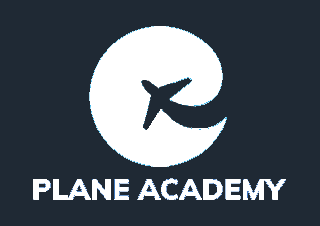How to pass an airline assessment
Preparing for an airline assessment is a crucial step for anyone aspiring to embark on a career as a pilot. Whether you’re a recent college or university graduate, someone considering a career change, or even a seasoned pilot looking to switch airlines, the assessment process can be both exciting and challenging. This guide aims to provide you with a comprehensive overview of what to expect during an airline assessment and how to best prepare for success.
Why Preparation Matters: Entering the world of commercial aviation requires more than just flying skills. Airlines seek candidates who demonstrate a wide range of competencies, from communication and teamwork to problem-solving and multitasking abilities. Therefore, thorough preparation is essential to ensure you showcase your strengths and stand out as a top candidate.
What to Expect: During an airline assessment, you’ll encounter various stages designed to evaluate your aptitude, skills, and suitability for the role. These may include competency-based interviews, aptitude tests, group exercises, simulator sessions, and more. Each stage presents its own set of challenges, but with the right preparation and mindset, you can navigate them successfully.
Our Approach: Throughout this guide, we’ll delve into each aspect of the airline assessment process, providing valuable insights, practical tips, and expert advice to help you excel. Whether you’re facing competency-based questions, numerical reasoning tests, or simulator sessions, we’ll equip you with the knowledge and strategies needed to perform your best.
For those who arent holders of a pilots license reading this for the first time, before embarking on a costly and time-consuming training program it is important to ask some key questions:
- What is the likelihood of securing a commercial pilot position upon graduation from training?
- Where are the growth areas going to be in the future – if these are outside the UK, am prepared to move and live abroad for significant periods of time?
- Am I going to be able to secure a position that will service my debt sufficiently?
- Will the financial commitment I need to make in my career be a worthwhile investment in the long term?
- Does the profession offer me the rewards and lifestyle I am looking for?
- Is the profession able to give me the security that I would need if I have a family to support?
Traditionally UK airlines will start hiring in the autumn so that the correct numbers of pilots are in place for the following peak summer season. Ideally, to prevent a possible break in currency your training should be planned so that you will have completed by the end of the summer. This will give you time to write and send your CV and make the follow up calls and emails. Recruitment departments usually ring to schedule an interview, so it is imperative you are contactable during this time – if you miss a call they may go on to the next person and you could miss your opportunity.
Perseverance is a key to getting a job. Individuals must be prepared proactively to market themselves, otherwise, failure at the last hurdle may be the final outcome. Some pilots have taken up to five years to secure their first opportunity, but one to two years is a more normal time-frame.
Competency-Based Questions
Competency-based questions are a cornerstone of airline assessments, aiming to assess candidates’ suitability for the role based on specific skills and behaviors. Rather than asking hypothetical or general questions, interviewers focus on past experiences and situations to gauge how candidates have demonstrated key competencies in real-life scenarios. Here’s what you need to know about competency-based questions and how to tackle them effectively:
Understanding Competencies: Before diving into competency-based questions, it’s essential to familiarize yourself with the core competencies airlines are looking for in their pilots. These may include communication, teamwork, decision-making, problem-solving, leadership, adaptability, and more. Take time to reflect on your own experiences and identify instances where you’ve exhibited these competencies in various contexts.
STAR Technique: The STAR technique is a valuable framework for structuring your responses to competency-based questions. STAR stands for Situation, Task, Action, and Result. When answering a question, start by describing the situation or scenario you were in, outline the specific task or challenge you faced, explain the actions you took to address the situation, and conclude by highlighting the results or outcomes of your actions.
Examples and Practice: To prepare for competency-based questions, compile a list of relevant examples from your academic, professional, or personal experiences. These examples should showcase your ability to handle different situations and demonstrate the desired competencies. Practice articulating your responses using the STAR technique, ensuring clarity, conciseness, and relevance.
Tailoring Your Responses: While preparing your examples, consider the specific competencies and qualities that airlines are likely to prioritize. Tailor your responses to highlight these key attributes, emphasizing your leadership skills, teamwork abilities, safety awareness, and commitment to excellence. Be authentic and genuine in your responses, drawing from genuine experiences that resonate with the airline’s values and culture.
Handling Challenging Questions: During the interview, you may encounter challenging or unexpected questions designed to assess your resilience, adaptability, and problem-solving skills. Approach these questions with confidence and composure, maintaining a positive attitude and demonstrating your ability to think on your feet. Take a moment to gather your thoughts before responding, and don’t be afraid to ask for clarification if needed.
Continuous Improvement: Finally, view competency-based questions as an opportunity for self-reflection and continuous improvement. Regardless of the outcome of the assessment, take note of areas where you can further develop your skills and competencies. Seek feedback from mentors, peers, or interviewers to gain valuable insights and refine your approach for future assessments. By mastering competency-based questions and effectively showcasing your skills and experiences, you’ll position yourself as a strong candidate for the airline pilot role. With preparation, practice, and a positive mindset, you can confidently navigate the interview process and chart a course for success in your aviation career.
Aptitude Tests
Aptitude tests are a critical component of airline assessments, designed to evaluate candidates’ cognitive abilities, mental agility, and suitability for the demands of pilot training and operations. Here’s what you need to know about aptitude tests and how to excel in them:
Types of Aptitude Tests: Aptitude tests used in airline assessments typically cover a range of cognitive domains, including numerical reasoning, verbal reasoning, spatial awareness, multitasking, and error checking. Each test is designed to assess specific skills and competencies relevant to piloting, such as problem-solving, decision-making, and information processing.
Preparation Strategies: Preparing for aptitude tests requires a combination of practice, familiarization with test formats, and honing essential cognitive skills. Start by researching the types of aptitude tests commonly used by airlines and obtain practice materials or sample questions. Dedicate time to regular practice sessions, focusing on areas where you may need improvement.
Numerical Reasoning: Numerical reasoning tests evaluate candidates’ ability to interpret and manipulate numerical data under time constraints. Practice basic arithmetic, percentages, ratios, and data interpretation exercises to sharpen your numerical reasoning skills. Familiarize yourself with common question formats, such as graphs, tables, and charts.
Verbal Reasoning: Verbal reasoning tests assess candidates’ comprehension, vocabulary, and critical thinking abilities based on written passages or statements. Practice reading comprehension exercises, identifying key information, and drawing logical conclusions from the text. Expand your vocabulary and enhance your reading speed to improve your performance in verbal reasoning tests.
Spatial Awareness: Spatial awareness tests measure candidates’ ability to mentally manipulate objects and visualize spatial relationships. Practice spatial reasoning exercises, such as shape rotations, pattern completion, and 3D puzzles. Develop strategies for mentally rotating objects and interpreting spatial configurations accurately.
Simple Multitasking: Simple multitasking tests assess candidates’ capacity to manage multiple tasks simultaneously and prioritize their workload effectively. Practice multitasking exercises that involve switching between tasks, maintaining focus, and managing time constraints. Develop strategies for organizing and sequencing tasks to optimize your multitasking performance.
Error Checking: Error checking tests evaluate candidates’ attention to detail, accuracy, and ability to identify errors or inconsistencies in data or information. Practice error detection exercises, such as proofreading passages, spotting numerical discrepancies, and identifying logical errors. Develop systematic approaches for systematically reviewing and verifying information.
Airline Competencies
Pilot core competencies serve as an industry-standard benchmark utilized by airline recruitment teams to assess candidates’ suitability for Captain or First Officer roles. Each competency encompasses a range of behavioral indicators that pilots should exhibit to ensure safe, efficient, and comfortable operations.
Understanding and practicing these competencies are vital for aspiring pilots. Here, we outline each of the nine competencies along with their respective explanations and behavioral subsets:
-
Communication (COM): Demonstrating effective oral, non-verbal, and written communications, both in normal and non-normal situations. This includes prioritizing communication, ensuring clarity and accuracy, active listening, and appropriate use of body language.
-
Workload Management (WLM): Efficiently managing available resources to prioritize and perform tasks under all circumstances. This involves being methodical, managing time effectively, accepting assistance when needed, and recovering from interruptions or distractions.
-
Situational Awareness (SAW): Perceiving and comprehending all relevant information available and anticipating potential operational impacts. This encompasses awareness of aircraft systems, flight path, environmental factors, time, fuel, and potential threats.
-
Knowledge (KNO): Demonstrating practical and applicable knowledge gained through education, flight training, and experience. This includes understanding limitations and systems, operating instructions, environmental factors, applicable legislation, and effectively applying acquired knowledge.
-
Application of Procedures (PRO): Identifying and applying procedures in accordance with published operating instructions and regulations. This involves adherence to Standard Operating Procedures (SOPs), correctly using aircraft systems and controls, and disciplined use of checklists and procedures.
-
Flight Path Management Automation (FPA): Controlling aircraft flight path through automation, ensuring accuracy and smoothness, detecting deviations, and selecting appropriate automation levels considering workload and flight phase.
-
Flight Path Management Manual (FPM): Controlling aircraft flight path manually, ensuring accuracy and safety, managing flight path during manual flight, and effectively monitoring flight guidance systems.
-
Problem Solving and Decision Making (PSD): Accurately identifying risks, resolving problems, and employing appropriate decision-making processes. This includes seeking relevant information, prioritizing criteria, making timely decisions, and improvising in unforeseen circumstances.
-
Leadership and Teamwork (LTW): Demonstrating effective leadership and teamwork, fostering open communication, taking initiative, and involving others in planning and activities while maintaining integrity, empathy, and respect.
KSA100
KSA100, also known as the Knowledge, Skills, and Abilities (KSA) 100, is a comprehensive assessment framework used by airlines to evaluate candidates’ suitability for pilot positions. It encompasses a wide range of cognitive, psychomotor, and behavioral competencies essential for effective performance in the aviation industry. Here’s an overview of the key components of KSA100:
Knowledge: KSA100 assesses candidates’ theoretical knowledge of aviation principles, regulations, procedures, and aircraft systems. This includes understanding airspace classifications, navigation techniques, meteorology, aerodynamics, aircraft performance, and emergency procedures. Candidates are tested on their ability to apply theoretical knowledge to practical flight scenarios and demonstrate a thorough understanding of aviation concepts relevant to their role as pilots.
Skills: KSA100 evaluates candidates’ practical skills in operating aircraft, navigating airspace, conducting flight planning, and managing flight deck systems and controls. This includes proficiency in flight maneuvers, instrument flying, radio communication, cockpit resource management, and emergency response procedures. Candidates undergo hands-on assessments, flight simulator sessions, and flight training exercises to demonstrate their competence in executing various piloting tasks under simulated and real-world conditions.
Abilities: KSA100 assesses candidates’ cognitive abilities, decision-making skills, situational awareness, and interpersonal competencies required for effective performance as pilots. This encompasses critical thinking, problem-solving, risk management, multitasking, teamwork, communication, and leadership skills. Candidates are evaluated on their ability to analyze complex flight scenarios, make timely and informed decisions, maintain awareness of their surroundings, and interact collaboratively with crew members and air traffic control. The KSA100 framework provides a structured and standardized approach to assessing candidates’ readiness for airline pilot roles, ensuring that they possess the requisite knowledge, skills, and abilities to operate aircraft safely and proficiently in diverse flight environments. By mastering the components of KSA100 and undergoing rigorous training and assessment, aspiring pilots can enhance their employability and readiness for the challenges of modern aviation careers.
Numerical Reasoning
Numerical reasoning is a crucial aspect of pilot assessments, as it involves the ability to interpret and manipulate numerical data quickly and accurately, which is essential for flight planning, navigation, and decision-making in the cockpit. Here’s what you need to know about numerical reasoning assessments for pilot recruitment:
Purpose: Numerical reasoning tests evaluate candidates’ mathematical aptitude, problem-solving skills, and ability to interpret numerical information relevant to aviation. These tests assess candidates’ capacity to perform mental arithmetic, analyze numerical data, and apply mathematical concepts in practical aviation scenarios.
Types of Questions: Numerical reasoning tests typically include a variety of question types, such as arithmetic calculations, percentages, ratios, proportions, averages, and conversions. Candidates may be required to solve equations, interpret graphs and charts, calculate distances, speeds, and fuel consumption, and make numerical estimations under time pressure.
Time Constraints: Numerical reasoning tests are often timed to assess candidates’ ability to work efficiently under pressure, simulating the time-sensitive nature of pilot tasks during flight operations. Candidates must manage their time effectively, prioritize tasks, and maintain accuracy while completing numerical calculations within the allotted timeframe.
Preparation Tips: To excel in numerical reasoning assessments, candidates should practice mental arithmetic, brush up on mathematical concepts relevant to aviation (e.g., time-speed-distance calculations, fuel planning), and familiarize themselves with common numerical reasoning question formats. Online practice tests and numerical reasoning study guides can help candidates sharpen their mathematical skills and improve their speed and accuracy in solving numerical problems.
If you want to practice some numerical reasoning questions download them here
Verbal Reasoning Purpose:
Verbal reasoning tests evaluate candidates’ language proficiency, reading comprehension skills, and ability to understand and interpret written instructions, procedures, and aviation-related documentation. These tests assess candidates’ capacity to extract relevant information from written passages, identify key details, and apply logical reasoning to answer questions accurately.
Types of Questions: Verbal reasoning tests typically consist of reading comprehension exercises, where candidates are presented with written passages or scenarios related to aviation topics such as aircraft systems, flight regulations, navigation procedures, and aviation safety. Candidates must read the passages carefully, analyze the information provided, and answer multiple-choice questions based on the content of the passage.
Comprehension Skills: Successful performance in verbal reasoning assessments requires strong comprehension skills, including the ability to identify main ideas, infer implied meanings, recognize contextually relevant information, and evaluate the author’s tone, perspective, and purpose. Candidates must demonstrate proficiency in understanding written instructions, interpreting technical documents, and extracting pertinent details from complex textual material.
Time Management: Verbal reasoning tests are often timed to assess candidates’ ability to read and comprehend written passages efficiently within a limited timeframe. Candidates must allocate their time wisely, prioritize reading tasks, and maintain focus while processing information and answering questions accurately under time pressure.
Preparation Tips: To excel in verbal reasoning assessments, candidates should practice reading comprehension exercises, enhance their vocabulary and language skills, and familiarize themselves with aviation-related terminology and concepts. Engaging in regular reading of aviation publications, manuals, and regulatory documents can improve candidates’ reading fluency and comprehension abilities.
Importance: Verbal reasoning skills are essential for pilots to interpret flight manuals, communicate effectively with air traffic control (ATC), comprehend aviation regulations and procedures, and convey information to passengers and crew members. Strong verbal reasoning abilities enable pilots to understand written instructions, interpret complex technical documents, and communicate clearly and accurately in aeronautical contexts, contributing to safe and efficient flight operations.
If you want to practice some verbal reasoning questions download them here
Group Exercise
A group exercise is not just about showcasing individual brilliance; it’s about navigating the delicate balance of teamwork and individual contribution. Here’s how to ace your next group assessment:
Understanding the Purpose: Group exercises are designed to simulate real-world team interactions under pressure. Assessors keenly observe how you collaborate, communicate, and problem-solve within a team setting. Your performance in these exercises reflects your potential as a team player and leader in professional environments like the flight deck.
Effective Communication: In aviation, effective communication is paramount. Whether interacting with crew members, ground staff, or air traffic control, pilots must communicate clearly and courteously. Similarly, in group exercises, prioritize clear, concise, and courteous communication. Actively listen to others, offer constructive feedback, and ensure everyone’s voice is heard.
The Standard Group Exercise: Typically lasting 15-30 minutes, group exercises involve analyzing a task, making decisions, and presenting solutions. Pay attention to detail, ensure everyone has the same information, and collaborate to reach consensus. Remember, there’s no right or wrong answer; focus on your individual contribution and problem-solving approach.
Key Skills Assessed: Assessors evaluate various competencies during group exercises, including teamwork, leadership, initiative, time management, and communication skills. Demonstrate your ability to relate to others, work collaboratively, and make informed decisions within a team environment.
Approach Tips:
- Address team members by name to foster engagement.
- Strike a balance between contributing and allowing others to speak.
- Prioritize quality contributions over quantity.
- Volunteer for roles but remain inclusive and avoid dominating the group.
- Encourage participation from quieter members and keep discussions on track.
Group Interview Do’s:
- Arrive early to make a positive impression and engage with others.
- Prepare a brief, engaging introduction about yourself.
- Maintain good posture and attentive body language throughout.
- Ask relevant questions and participate actively in discussions.
- Ensure everyone’s opinions are valued and included in the conversation.
Group Interview Don’ts:
- Avoid being overly scripted or insincere; be genuine.
- Refrain from interrupting or talking over others; practice active listening.
- Don’t allow dominant personalities to overshadow the group; assert yourself respectfully.
- Maintain professionalism and avoid overly casual or inappropriate language.
- Stay focused and attentive; avoid distractions like checking your phone or doodling.
Mastering group exercises requires a blend of teamwork, communication, and leadership skills. By understanding the purpose, embracing collaboration, and demonstrating professionalism, you can excel in group assessments and showcase your potential as a future aviation professional.
We have gone into more detail in our other blog post about how to pass a group exercise here
Simple Multitasking
Multitasking is an essential skill for pilots, who often need to manage multiple tasks simultaneously, especially during flight operations. Here’s how you can prepare for multitasking assessments:
- Practice Prioritization: Identify tasks based on their urgency and importance. Prioritize critical tasks such as monitoring instruments and communicating with air traffic control.
- Use Checklists: Utilize checklists to ensure you don’t miss any crucial steps during pre-flight, in-flight, and post-flight procedures. Familiarize yourself with the sequence of tasks to streamline your workflow.
- Stay Organized: Keep your cockpit organized to minimize clutter and facilitate quick access to essential documents and equipment. Maintain a clear mental map of where everything is located.
- Effective Communication: Develop clear and concise communication skills to relay information to other crew members and air traffic control while focusing on flying the aircraft.
- Stay Calm Under Pressure: Practice maintaining composure during stressful situations. Stay focused on the task at hand and avoid becoming overwhelmed by external distractions.
- Simulator Training: Take advantage of simulator training to simulate real-world scenarios and hone your multitasking abilities in a safe environment. Practice managing various flight scenarios while juggling communication, navigation, and aircraft control tasks.
Error Checking
- Attention to Detail: Pay close attention to every detail, whether it’s reviewing flight plans, cross-checking instruments, or verifying communications. Even minor errors can have significant consequences in aviation.
- Use Redundancy: Implement redundant systems and procedures to catch errors before they escalate. Cross-checking with multiple sources can help identify discrepancies and mitigate risks.
- Follow Standard Procedures: Adhere to standard operating procedures (SOPs) and checklists to minimize the risk of human error. These protocols are designed to guide pilots through routine tasks and ensure consistency and accuracy.
- Verification and Validation: Verify critical information independently and validate data with reliable sources. Double-check calculations, coordinates, frequencies, and other essential parameters to avoid misunderstandings or oversights.
- Effective Communication: Communicate openly and effectively with other crew members to exchange critical information and confirm mutual understanding. Encourage a culture of questioning and clarification to catch errors early.
- Continuous Monitoring: Maintain vigilant surveillance of aircraft systems, weather conditions, and airspace throughout the flight. Monitor for any deviations from the planned route or abnormal indications that may signal potential errors.
- Learn from Mistakes: Embrace a proactive approach to error management by analyzing past incidents and learning from mistakes. Conduct debriefings after flights to identify areas for improvement and implement corrective actions.
Simulator Preparation
Simulator sessions are crucial components of pilot assessments, offering a realistic environment to test your flying skills and decision-making abilities. Here’s how to prepare effectively: Understanding Simulator Assessments: Simulator assessments aim to evaluate your competency in handling various flight scenarios, from routine procedures to emergency situations. Assessors observe your ability to apply standard operating procedures, maintain situational awareness, and make sound decisions under pressure.
Preparation Tips:
- Know Your Procedures: Review aircraft operating manuals and standard procedures relevant to the simulator aircraft. Familiarize yourself with checklist flows, emergency protocols, and abnormal procedures.
- Practice Basic Maneuvers: Hone your flying skills by practicing basic maneuvers such as climbs, descents, turns, and level flight. Focus on maintaining precise control inputs and smooth transitions.
- Emergency Procedures: Prepare for simulated emergencies such as engine failures, system malfunctions, and instrument failures. Practice your response procedures and prioritize tasks effectively.
- Navigation Skills: Brush up on navigation techniques, including VOR tracking, intercepting radials, and flying holding patterns. Ensure you can navigate accurately using both traditional instruments and modern avionics systems.
- Flight Planning: Develop flight plans for simulated scenarios, considering factors such as weather, fuel requirements, alternate airports, and airspace restrictions. Practice briefings and decision-making processes.
- Crew Resource Management: Emphasize effective communication, teamwork, and workload management during simulator sessions. Practice coordinating tasks with simulated crew members and utilizing resources efficiently.
- Procedural Proficiency: Demonstrate proficiency in executing standard operating procedures, including pre-flight checks, takeoff and landing procedures, and in-flight checklists. Strive for consistency and precision in your actions.
- System Familiarization: If possible, familiarize yourself with the specific simulator model you’ll be using for the assessment. Practice operating cockpit systems, avionics displays, and autopilot functions to enhance your confidence and efficiency.
- Debriefing Skills: Develop the ability to analyze your performance objectively during post-flight debriefings. Identify areas for improvement, discuss decision-making processes, and learn from simulated scenarios to enhance your skills.
During the Simulator Assessment:
- Stay Calm: Maintain composure and focus during the simulator session, regardless of the challenges presented. Stay alert, adapt to changing conditions, and prioritize safety at all times.
- Follow Procedures: Adhere to established procedures and protocols throughout the assessment. Communicate effectively with simulated crew members, respond to instructions promptly, and execute tasks methodically.
- Situational Awareness: Maintain situational awareness by monitoring aircraft systems, navigation displays, and external factors such as weather and traffic. Anticipate potential threats or challenges and take proactive measures to mitigate risks.
- Decision Making: Make informed decisions based on available information, risk assessment, and standard operating procedures. Prioritize tasks, communicate intentions clearly, and seek assistance or guidance when necessary.
- Feedback: Actively participate in post-flight debriefings to receive feedback from assessors and instructors. Reflect on your performance, identify areas for improvement, and incorporate feedback into your training regimen.
There’s an argument that says that spending money on Simulator Assessment Preparation isn’t needed. The assessment is designed to test for a positive learning curve, as well as handling and multi-crew skills, and flying capacity – they’re not expecting perfection. But it’s the last point which is important. When you’re placed into a new, unfamiliar aircraft flight deck, it takes a large chunk of your capacity in order to safely and accurately fly the aeroplane. Your mind is concentrating almost completely on the pitch and power settings, trimming the aircraft and following the flight profile. You’re left with very little spare capacity with which to demonstrate your airmanship, CRM and notech skills – the skills which set you apart from everyone else. If you’ve overcome this initial phase in an assessment preparation session, you’ll use less of your capacity on flying the aircraft, and really be able to shine in the real assessment.
Of course, it’s important to choose the right provider for your Simulator Assessment Preparation. There are many companies who provide various levels and standards of training on various levels of simulator. Aviation Insider’s instructors are all currently operating airline pilots, with experience of airline recruitment profiles. They also provide Assessment Preparation guides which is compiled from feedback from previous clients as well as handy tips on flying the aircraft. If youre intersted in simulator preparation, find out more about Aviation Insider’s Simulator Assessment Preparation here
Interview Preparation
Preparing for an airline pilot interview involves more than just reviewing your resume. Here’s how to approach the interview process strategically: Understanding the Interview Process: Airline pilot interviews typically consist of several stages, including HR screenings, technical assessments, and competency-based interviews. Each stage evaluates different aspects of your qualifications, experience, and suitability for the role. Preparation Tips:
- Research the Airline: Familiarize yourself with the airline’s history, fleet, routes, and company culture. Understand their core values, safety record, and recent developments in the aviation industry.
- Review Your Resume: Be prepared to discuss your aviation background, qualifications, flight experience, and career aspirations. Highlight relevant achievements, leadership roles, and training certifications.
- Study Technical Topics: Refresh your knowledge of aircraft systems, aerodynamics, navigation procedures, and aviation regulations. Practice answering technical questions confidently and accurately.
- Mock Interviews: Conduct mock interviews with peers, mentors, or professional interview coaches to simulate the interview experience. Receive feedback on your communication skills, body language, and responses to common interview questions.
- Behavioral Examples: Prepare examples of past experiences that demonstrate key competencies such as leadership, teamwork, problem-solving, and decision-making. Use the STAR method (Situation, Task, Action, Result) to structure your responses effectively.
- Stay Updated: Stay informed about current events, industry trends, and regulatory changes affecting the aviation sector. Demonstrate your awareness of relevant issues during the interview.
- Ask Questions: Prepare thoughtful questions to ask the interviewers about the airline, the role, training programs, career advancement opportunities, and company culture. Show genuine interest and curiosity.
- Professional Appearance: Dress in professional attire that reflects the airline’s dress code and corporate culture. Pay attention to grooming, hygiene, and presentation to make a positive impression.
- Confidence and Enthusiasm: Approach the interview with confidence, enthusiasm, and a positive attitude. Maintain eye contact, smile, and speak clearly and articulately. Show passion for aviation and your commitment to safety and excellence.
- Follow-Up: Send a thank-you email or note to the interviewers expressing your appreciation for the opportunity to interview. Reiterate your interest in the position and summarize key points discussed during the interview.
During the Interview:
- Active Listening: Listen carefully to the questions asked by the interviewers and take a moment to formulate your response before speaking. Avoid interrupting or rushing your answers.
- Structured Responses: Use the STAR method to structure your responses to behavioral questions. Provide specific examples, describe your actions and decisions, and articulate the outcomes or results achieved.
- Professional Demeanor: Maintain professionalism and composure throughout the interview. Be polite, respectful, and courteous to all individuals you encounter during the process.
- Adaptability: Be prepared to adapt to unexpected questions or scenarios presented during the interview. Stay flexible, remain calm under pressure, and demonstrate your ability to think on your feet.
- Authenticity: Be genuine and authentic in your responses, avoiding embellishments or exaggerations. Share honest reflections on your experiences, strengths, weaknesses, and areas for growth.
- Closing Statement: Conclude the interview with a brief summary of your qualifications, key attributes, and enthusiasm for the role. Thank the interviewers for their time and consideration.
We work with Airline Prep, the industry leaders in interview preparation, find out more here
Last words…
Preparing for an airline pilot interview requires a strategic approach encompassing various stages. Firstly, understand the interview process, which typically includes HR screenings, technical assessments, and competency-based interviews. Research the airline thoroughly, reviewing its history, fleet, routes, and company culture. Refresh your knowledge of technical topics such as aircraft systems, aerodynamics, and aviation regulations, and practice answering questions confidently.
Conduct mock interviews to simulate the interview experience and receive feedback on your communication skills. Prepare examples of past experiences that demonstrate key competencies like leadership, teamwork, and problem-solving. Stay updated on current events and industry trends, demonstrating your awareness during the interview. Dress professionally, maintain confidence, and show enthusiasm for aviation and safety.
During the interview, listen actively to questions, and structure your responses using the STAR method for behavioral questions. Maintain professionalism, adaptability, and authenticity throughout the interview process. Ask thoughtful questions about the airline, the role, and training programs to demonstrate genuine interest. Conclude the interview with a brief summary of your qualifications and enthusiasm for the role, thanking the interviewers for their time and consideration. With thorough preparation and a positive attitude, you can increase your chances of success and secure your dream job as an airline pilot.
